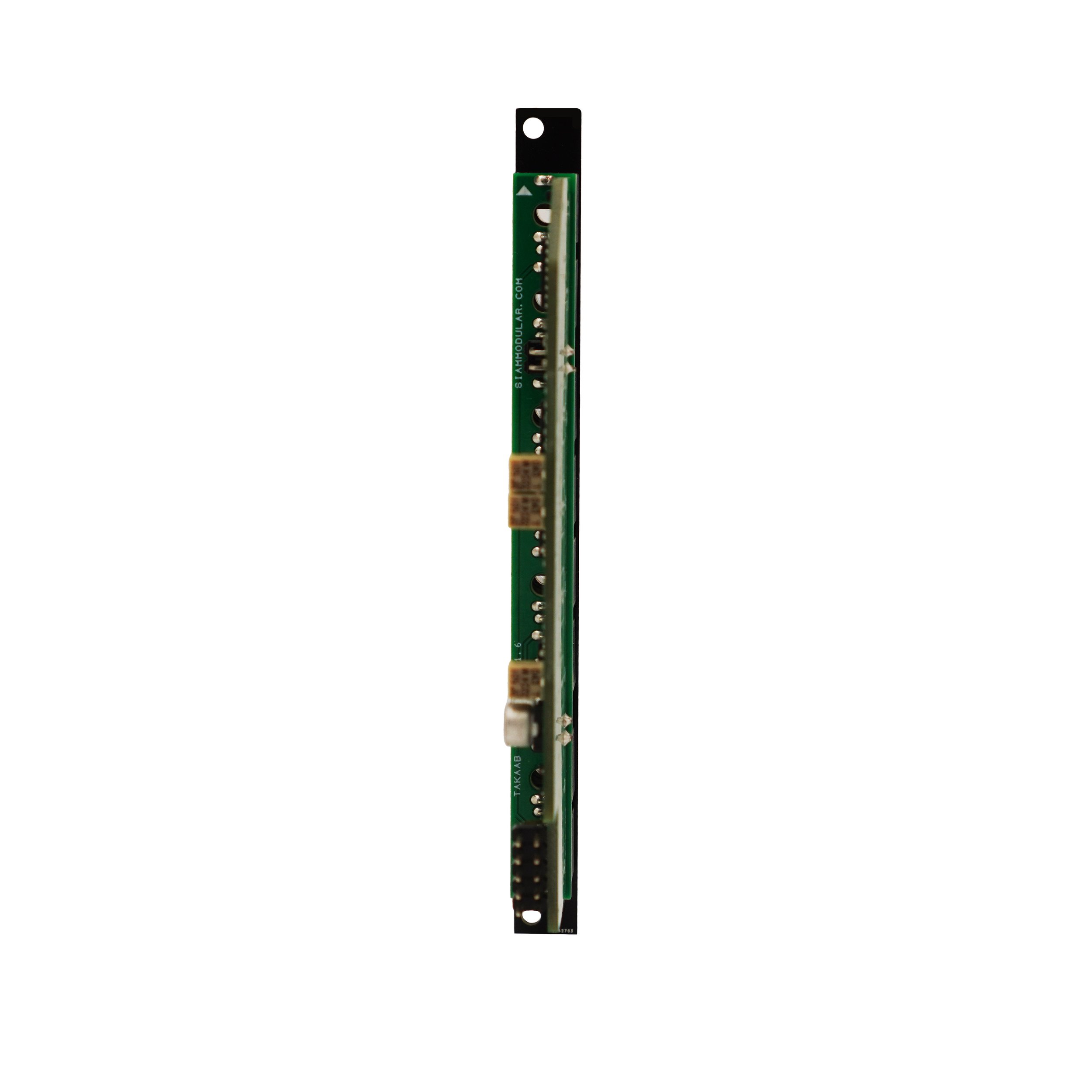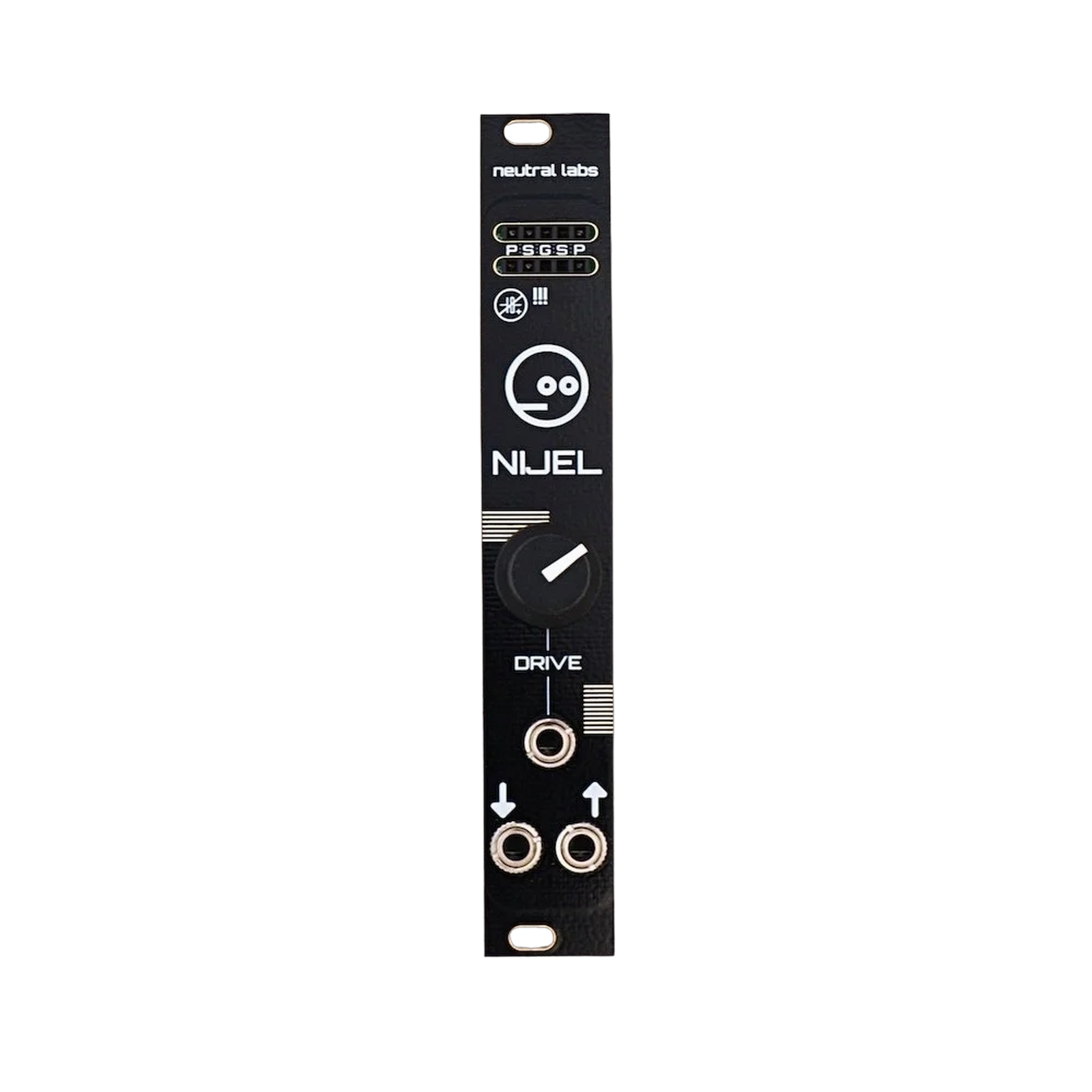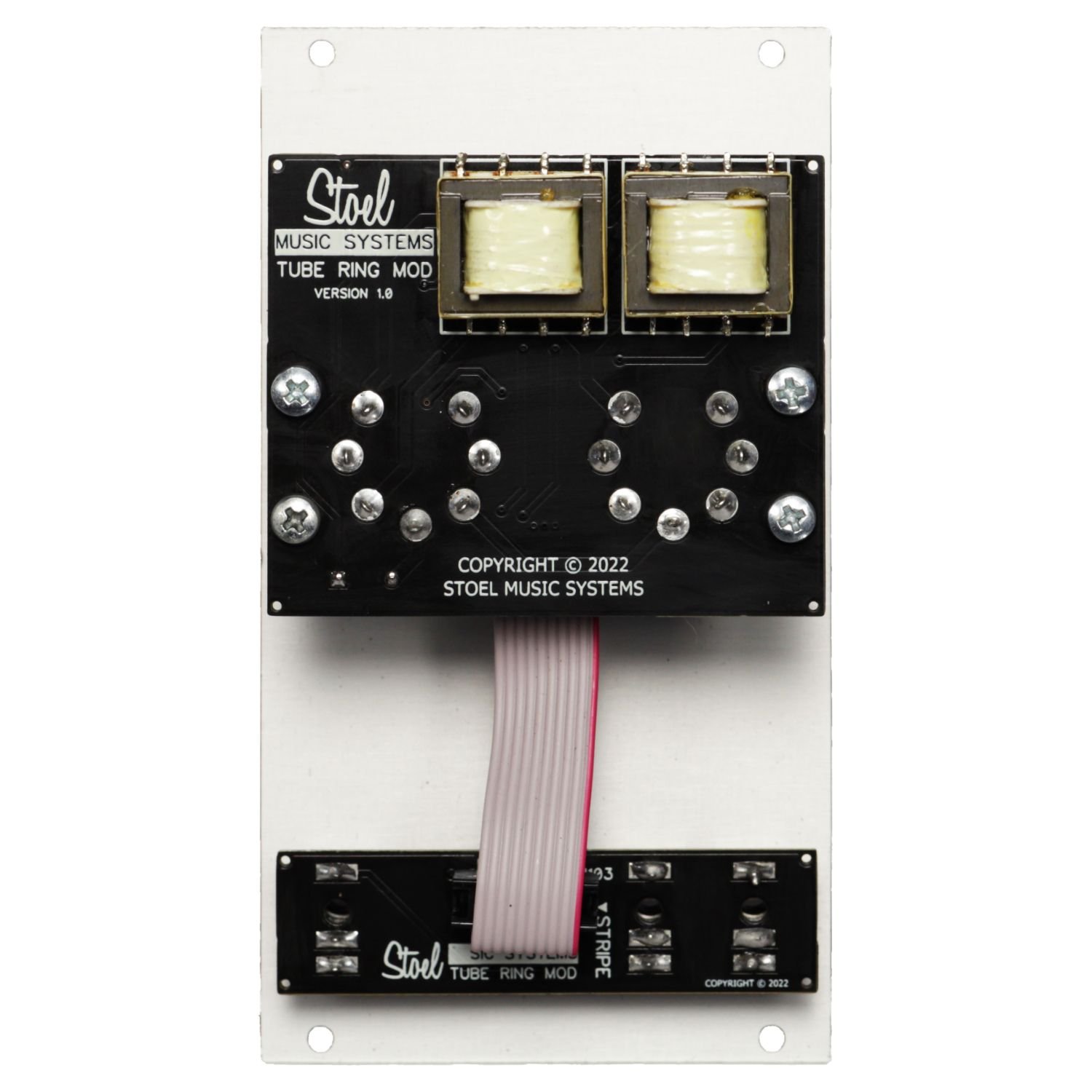 Image 1 of 4
Image 1 of 4

 Image 2 of 4
Image 2 of 4

 Image 3 of 4
Image 3 of 4

 Image 4 of 4
Image 4 of 4





VCO's Little Helper by Takaab (Siam Modular) - Ring Modulator, Sub Oscillator, Noise
VCO’s Little Helper is a Eurorack module that supercharges your existing oscillators by adding a ring mod, sub and noise. The VLH was designed in collaboration with journalist and musician Steve O'Hear following a conversation asking how we could squeeze the features found in the VCO section of many vintage synthesizers into a Eurorack system. Specifically, we set ourselves the challenge of designing a great sounding ring modulator, coupled with two ‘sub oscillators’ (frequency dividers) and a noise generator, all packaged into a module small enough to demand space in any eurorack case. At just 2hp in size, the resulting all-analog design has A and B inputs (intended to receive up to two VCOs), ring mod (A carrier/B modulator), sub1 (A -1 octave), sub2 (A -2 octaves), noise, and A and B thrus.
A*B - The ring modulator acts on the original signals, with the modulator (input B) behaving something like an attenuverting VCA on the carrier (input A). The result is A*B effectively kicks out the sum and difference between the frequencies of the two input signals. The sound can range from wacky sound effects (a la 1950's and 60's sci-fi) but it can also create very musical, harmonic sounds if the two input frequencies are musically related. The texture of the resulting sound also differs depending on the input waves - pure sine waves create soft clean tones, while saw-tooth and square waves spit out harder more gritty sounds.
A÷2 and A÷4 are sub oscillators that put out square waves at 1/2 and 1/4 of the frequency of input A. A÷2 is also normalised to input B so that the functionality the VLH's modulator can be attained with only a single VCO patched into input A (although, admittedly, things get a lot more interesting harmonically when both the A and B inputs are patched with different signals).
NOISE is an analog noise source in a very usable range which is near-enough white noise with some roll-off at the lower and top end of the audible range.
A and B 'THRU's are passive mult's of the original signals, allowing you to easily re-use your VCOs elsewhere in a patch without having to first un-patch the VLH or use a separate mult.
Those trimmers - Please ignore. They shouldn't need to be touched by the end user. 'NOISE LEVEL' does exactly what it says, but should already be trimmed to +/-5V when it ships. 'TRIM CARRIER' and 'TRIM MODULATOR' again are preset before shipping. You shouldn't need to touch these unless you hear an issue with the modulator sound and know what you are doing. Similarly there are a pair of solder-jumpers on the board which allow the switching of the two inputs routing to the carrier and modulator of the ring mod. You shouldn't touch these unless you understand the circuit and have the necessary equipment and know-how to re-trim the signals.
VCO’s Little Helper is a Eurorack module that supercharges your existing oscillators by adding a ring mod, sub and noise. The VLH was designed in collaboration with journalist and musician Steve O'Hear following a conversation asking how we could squeeze the features found in the VCO section of many vintage synthesizers into a Eurorack system. Specifically, we set ourselves the challenge of designing a great sounding ring modulator, coupled with two ‘sub oscillators’ (frequency dividers) and a noise generator, all packaged into a module small enough to demand space in any eurorack case. At just 2hp in size, the resulting all-analog design has A and B inputs (intended to receive up to two VCOs), ring mod (A carrier/B modulator), sub1 (A -1 octave), sub2 (A -2 octaves), noise, and A and B thrus.
A*B - The ring modulator acts on the original signals, with the modulator (input B) behaving something like an attenuverting VCA on the carrier (input A). The result is A*B effectively kicks out the sum and difference between the frequencies of the two input signals. The sound can range from wacky sound effects (a la 1950's and 60's sci-fi) but it can also create very musical, harmonic sounds if the two input frequencies are musically related. The texture of the resulting sound also differs depending on the input waves - pure sine waves create soft clean tones, while saw-tooth and square waves spit out harder more gritty sounds.
A÷2 and A÷4 are sub oscillators that put out square waves at 1/2 and 1/4 of the frequency of input A. A÷2 is also normalised to input B so that the functionality the VLH's modulator can be attained with only a single VCO patched into input A (although, admittedly, things get a lot more interesting harmonically when both the A and B inputs are patched with different signals).
NOISE is an analog noise source in a very usable range which is near-enough white noise with some roll-off at the lower and top end of the audible range.
A and B 'THRU's are passive mult's of the original signals, allowing you to easily re-use your VCOs elsewhere in a patch without having to first un-patch the VLH or use a separate mult.
Those trimmers - Please ignore. They shouldn't need to be touched by the end user. 'NOISE LEVEL' does exactly what it says, but should already be trimmed to +/-5V when it ships. 'TRIM CARRIER' and 'TRIM MODULATOR' again are preset before shipping. You shouldn't need to touch these unless you hear an issue with the modulator sound and know what you are doing. Similarly there are a pair of solder-jumpers on the board which allow the switching of the two inputs routing to the carrier and modulator of the ring mod. You shouldn't touch these unless you understand the circuit and have the necessary equipment and know-how to re-trim the signals.















